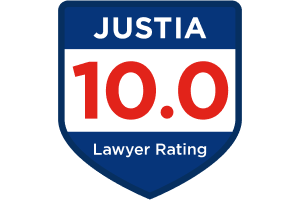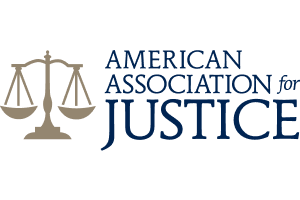New York Mesothelioma and Asbestos Lawyer
Mesothelioma is a rare and aggressive form of cancer that develops in the lining of the lungs, abdomen, heart, or testicles. It is caused by exposure to asbestos, a toxic mineral once widely used in construction, shipbuilding, manufacturing, and other industries for its heat resistance and durability. Despite being banned in many applications, asbestos remains present in older buildings and products, continuing to pose a risk. According to the Centers for Disease Control and Prevention (CDC), approximately 2,500 to 3,000 new cases of mesothelioma are diagnosed in the United States each year.
Because the disease has a long latency period—often 20 to 50 years—many victims do not learn of their exposure until decades later. In New York, where industrial and construction activity has long been prominent, thousands of workers, residents, and even family members have been exposed. If you or a loved one has been diagnosed with mesothelioma, immediately contact an experienced New York mesothelioma and asbestos lawyer who can help identify the source of exposure, determine all liable parties, and take legal action to recover the compensation victims and their families need for medical care, lost income, and future security.
What Is Mesothelioma and How Is It Caused?
Mesothelioma is cancer of the mesothelium, the thin lining around certain internal organs. It is a serious illness that interferes with the normal function of affected areas. The condition often progresses quickly and can be difficult to treat. There are several types:
- Pleural mesothelioma: Affects the lungs. This is the most common form.
- Peritoneal mesothelioma: Affects the abdominal cavity.
- Pericardial mesothelioma: Affects the sac around the heart.
- Tunica vaginalis mesothelioma: Affects tissue around the testicles and is very rare.
Mesothelioma is almost always caused by exposure to asbestos. When fibers are inhaled, they can lodge in the lungs or abdomen and remain there for decades. Over time, these fibers can damage cells and lead to cancer. Symptoms of mesothelioma often appear 20 to 50 years after exposure. These may include:
- Chest pain
- Shortness of breath
- Abdominal swelling
- Weight loss
- Fatigue
Because symptoms are non-specific, diagnosis is often delayed. However, a delayed diagnosis does not mean that you do not have a legal claim. Contact an experienced New York mesothelioma and asbestos lawyer to review your case and help determine your legal options.
Where Have People Been Exposed to Asbestos in New York?
Asbestos exposure in New York has occurred in many different environments due to the state’s long history of industrial, military, and residential development. People may have come into contact with asbestos at work, in their homes, or even at school.
- Shipyards: Shipbuilding and repair involved heavy asbestos use, especially in boilers, pipes, and insulation.
- Power plants: Asbestos was used in turbines, generators, and insulation.
- Factories and industrial plants: Workers in chemical plants, steel mills, and other facilities encountered asbestos in equipment and materials.
- Construction sites: Asbestos-containing materials were used in roofing, flooring, insulation, and drywall compounds.
- Schools and public buildings: Many older buildings in New York contain asbestos. Maintenance workers and teachers may have been exposed.
- Military bases: Veterans and civilian workers at military facilities were exposed, particularly those in the Navy.
- Residential homes: Homeowners and DIY renovators may have disturbed asbestos materials without knowing.
Note that family members may also suffer secondary exposure from asbestos fibers brought home on clothing. These exposures are just as serious and may form the basis of a legal claim. An experienced New York mesothelioma and asbestos lawyer can help determine how and where exposure occurred and identify the responsible parties.
What Legal Options Do Mesothelioma Victims Have in New York?
Victims diagnosed with mesothelioma due to asbestos exposure have the right to pursue compensation. There are two primary types of claims:
- Personal injury claims: These are filed by individuals who have been diagnosed with mesothelioma. The claim seeks compensation for medical bills, lost income, pain and suffering, and other damages caused by the illness.
- Wrongful death claims: These are brought by surviving family members, such as a spouse or children, when a loved one passes away from mesothelioma. The claim can include compensation for funeral costs, loss of financial support, and emotional loss. Wrongful death actions in New York are governed by EPTL 5-4.1.
Defendants in these lawsuits may include:
- Manufacturers of asbestos products: These companies made or sold products that contained asbestos and failed to warn users about the risks. Liability can arise under product liability theories including defective design and failure to warn. Courts have extended this liability to include consumer goods, not just industrial materials. For example, in Rothlein v. American International Industries, No. 190038/2018, 2020 N.Y. Misc. LEXIS 189 (Sup. Ct. N.Y. Cnty. Jan. 8, 2020), the plaintiff alleged she developed mesothelioma after using talcum powder contaminated with asbestos, and the court considered whether expert testimony and product identification were sufficient to support the claim.
- Distributors and suppliers: These entities helped move asbestos-containing products through the supply chain and may be liable if they knew or should have known the products were dangerous. Liability is based on negligence and strict liability principles.
- Employers who failed to protect workers: Companies that exposed workers to asbestos without providing proper safety measures may be held accountable under common law negligence or Labor Law provisions, depending on the nature of the exposure.
- Property owners who knew about the hazard: Building owners who were aware of asbestos on their property but failed to take steps to protect tenants, employees, or contractors may face legal responsibility under premises liability law and local health and safety codes
What Is the Statute of Limitations in New York?
New York law requires that personal injury claims for asbestos-related diseases be filed within three years of diagnosis. For wrongful death cases, the statute of limitations is two years from the date of death.
- CPLR 214(5): This provision sets a three-year time limit for personal injury lawsuits in New York. In asbestos cases, it typically starts when the plaintiff is diagnosed with an asbestos-related illness
- EPTL 5-1: This law governs wrongful death claims and provides a two-year deadline to file a lawsuit after the individual’s death from mesothelioma or a similar condition.
- CPLR 214-c(2): This section modifies CPLR 214(5) by applying a discovery rule for toxic exposure cases. It states that the three-year period does not begin at the time of exposure but instead starts when the injured person discovers, or reasonably should have discovered, the injury and its toxic cause. This rule is particularly relevant to mesothelioma cases, where the disease may not appear until decades after the exposure occurred.
Together, CPLR 214(5) and CPLR 214-c(2) ensure that individuals who were unknowingly exposed to asbestos are not barred from filing suit simply because many years have passed since the exposure. Instead, the legal clock begins when the illness is discovered and linked to the exposure.
Courts have affirmed this approach in decisions such as Matter of New York County DES Litig., 89 N.Y.2d 506 (1997). In that case, the New York Court of Appeals held that when a toxic substance causes a latent injury, the statute of limitations begins to run when the plaintiff discovers both the injury and its connection to the toxic exposure. This principle ensures that victims of long-latency illnesses like mesothelioma are not unfairly barred from seeking compensation.
Failing to file a claim within the applicable statute of limitations may result in losing the right to recover damages, regardless of the evidence. That is why it is important to consult a New York mesothelioma lawyer as soon as a diagnosis is made to protect your legal rights.
How Does the Legal Process Work?
If you or a loved one has been diagnosed with mesothelioma, you may be wondering what steps to take next. The legal process may seem overwhelming, but an experienced New York mesothelioma lawyer will handle the complex parts so you can focus on your health and family. Filing a mesothelioma lawsuit or trust claim involves several steps:
- Case review: A lawyer will evaluate your work history, exposure sources, and medical records.
- Investigation: Attorneys will gather documents, witness statements, and expert opinions to build your case. This includes:
- Medical records
- Employment history
- Product identification
- Expert testimony from doctors and industrial hygienists
- Filing the complaint: Your attorney will file a lawsuit against the responsible parties. This may be in state or federal court.
- Discovery: Both sides exchange evidence through interrogatories, depositions, and document requests.
- Settlement or trial: Many cases settle before trial. If not, the case proceeds to a jury.
- Asbestos trust claims: If the responsible company has declared bankruptcy, claims may be filed with an asbestos trust fund.
Trust claims do not require a trial. Your lawyer will file documentation with the trust administrator. Many clients pursue both a lawsuit and trust claims.
Mesothelioma cases are highly complex. They often involve exposure that occurred decades ago, multiple job sites, numerous defendants, and different types of legal claims. In addition, claimants may need to pursue compensation through both the court system and one or more asbestos bankruptcy trust funds. Handling all of this requires detailed knowledge of New York law, evidence rules, and medical documentation.
What Is an Asbestos Trust Fund?
Some asbestos companies have gone out of business and established trust funds to compensate victims. These funds were created during bankruptcy proceedings to ensure future victims can still receive compensation. Many well-known corporations, including Johns Manville and Owens Corning, have trusts in place.
Even if the company responsible is bankrupt, compensation may still be available through these trusts. A New York mesothelioma and asbestos lawyer can help determine which trusts may apply and handle the necessary paperwork. Each trust has different procedures, levels of compensation, and proof requirements. Your lawyer will research your exposure history and match it with available trust funds or viable defendants.
What Compensation Can Mesothelioma Victims Recover?
Mesothelioma victims in New York may be entitled to financial compensation to help address the serious losses caused by asbestos exposure. New York law permits recovery of both economic and non-economic damages through personal injury and wrongful death claims. These damages aim to account for the full impact of the disease on the victim and their family. Types of compensation may include:
- Medical expenses, including future care: This includes reimbursement for past treatment as well as the anticipated cost of ongoing medical care, such as chemotherapy, surgery, radiation, palliative care, prescription medications, in-home nursing, and medical equipment.
- Lost wages and future earning capacity: Victims who are no longer able to work may recover the income they lost due to their illness. This includes not only past missed paychecks but also projected future earnings the victim would have earned if not for the diagnosis. This is especially important for younger or working-age victims with dependents.
- Pain and suffering: This refers to the physical discomfort and emotional distress caused by mesothelioma. It includes chronic pain, difficulty breathing, anxiety, fear, and the loss of daily functioning or independence. These damages are evaluated based on the severity and duration of the suffering.
- Loss of enjoyment of life: Victims may be compensated for the inability to engage in hobbies, family activities, or other meaningful life experiences they once enjoyed. This loss can have a significant emotional and psychological impact.
- Funeral and burial costs (in wrongful death cases): When mesothelioma results in death, surviving family members may recover expenses for funeral services, cremation or burial, and other end-of-life costs.
- Loss of companionship or parental guidance: In wrongful death claims, a surviving spouse may seek compensation for the loss of marital companionship and affection. Children may recover for the loss of a parent’s guidance, care, and emotional support.
- Punitive damages: In some cases, courts may award punitive damages to punish defendants who acted with reckless disregard for safety. These damages are not meant to compensate the victim but to deter future misconduct. For example, courts have upheld punitive awards where companies knowingly sold asbestos products despite understanding the health risks.
In Simpson v. Pittsburgh Corning Corp., 901 F.2d 277 (2d Cir. 1990), the court upheld a substantial verdict for a mesothelioma victim’s estate that included both compensatory and punitive damages. The jury awarded $27,000 for medical and burial costs, $525,000 for pain and suffering, $500,000 for lost future earnings, $225,000 for loss of consortium, and $2.3 million in punitive damages. The punitive award was based on evidence that the defendant knowingly continued to sell asbestos-containing insulation despite the health risks. The Second Circuit found the damages reasonable and supported by the record, reinforcing the courts’ willingness to impose significant penalties for misconduct. This case highlights how courts assess both tangible and intangible losses when determining compensation in mesothelioma cases.
The total value of a mesothelioma case varies based on several factors. These include the age and health of the victim, the nature of the exposure, the length of time the victim was exposed to asbestos, whether the diagnosis was made before or after death, the number of liable parties, and the strength of the evidence linking exposure to the illness. An experienced New York mesothelioma and asbestos lawyer will carefully review these factors and work with experts to calculate appropriate damages.
Frequently Asked Questions
A: Not always. Many cases settle. Others are resolved through asbestos trust claims. If a settlement or trust claim is successful, you may never need to appear in court. However, if a fair settlement cannot be reached, going to trial may be necessary to pursue full compensation.
A: Not always. Many cases settle. Others are resolved through asbestos trust claims. If a settlement or trust claim is successful, you may never need to appear in court. However, if a fair settlement cannot be reached, going to trial may be necessary to pursue full compensation.
A: Yes. The statute of limitations runs from diagnosis, not the exposure date. This rule recognizes that asbestos-related diseases like mesothelioma often take decades to develop. Under CPLR 214-c(2), New York applies a discovery rule for toxic exposures, allowing the time limit to begin when the disease is discovered and linked to asbestos. This means you may still have a valid legal claim, even if the exposure occurred 30, 40, or 50 years ago.
A: Yes. Military exposure may allow for both VA benefits and lawsuits against third-party manufacturers. Veterans, particularly those who served in the Navy, were often exposed to asbestos on ships, in shipyards, or in military housing. While you cannot sue the military itself, you may still have legal options against the companies that supplied asbestos products to the military.
A: Yes. If you became ill from contact with asbestos on a family member’s clothing, you may have a claim. This is known as secondary or household exposure. Courts in New York have recognized claims based on secondhand exposure, especially when family members regularly handled contaminated clothing.
A: Usually not. These benefits are separate from civil claims, but your experienced mesothelioma and asbestos attorney serving New York can coordinate them. In many cases, you can receive compensation from a lawsuit or trust claim in addition to the benefits you already receive. It is important to disclose all benefit sources early in the legal process.
A: Some cases resolve in under a year. Complex cases may take longer. The timeline depends on factors like the number of defendants, the strength of the evidence, and whether the case goes to trial.
A: An experienced New York mesothelioma and asbestos lawyer can help trace your exposure by reviewing your job history and using established databases. Many law firms have access to detailed records of asbestos use at job sites, factories, and military installations across New York. Even if you don’t remember specific products or companies, your legal team can often identify likely sources of exposure. Early investigation is key to building a strong case.
Contact Stephen Bilkis & Associates
If you or a loved one has been diagnosed with mesothelioma in New York, it is important to act quickly. These cases involve strict filing deadlines, and delays can result in the loss of your legal rights. Early action also allows your experienced mesothelioma and asbestos attorney in New York to begin gathering medical records, work history, and other evidence needed to build a strong claim.
If you or a loved one has been injured in a bus accident, contact Stephen Bilkis & Associates today at 800.696.9529 to schedule a free consultation. We are available to help victims throughout New York City, Long Island, Westchester County, and surrounding areas, including the Bronx, Brooklyn, Manhattan, Queens, Staten Island, Nassau County, and Suffolk County.






